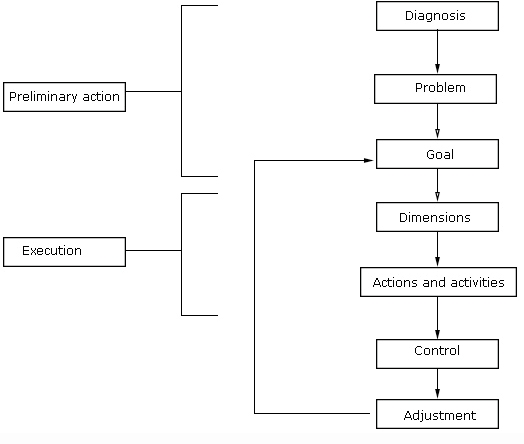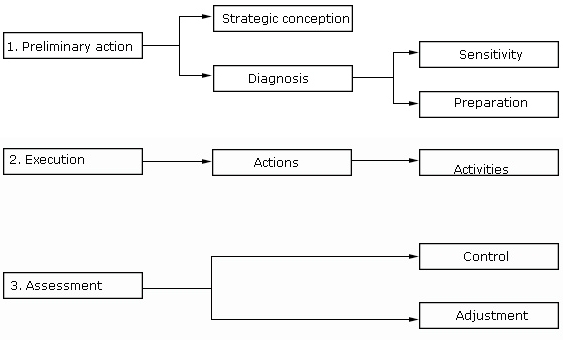INTRODUCTION
The environmental situation gets worse every day. Fidel Castro recalled his famous phrase expressed at the Rio Summit in 1992: "An important biological species is at risk of disappearing due to the rapid and progressive eradication of its natural living conditions: man" and added: "I did not know then however how close we were to it ".1 New alerts have been given recently in view of, the serious consequences of climate change.2,3,4 It is necessary to modify human behavior in relation to the problems of nature, of the human being and of society in order to avoid an ecological catastrophe of planetary scale.5
To achieve this change it is necessary to introduce the Environmental Dimension (ED) into the curriculums with a systemic, interdisciplinary and holistic approach.6,7 In previous works we presented the diagnosis about the knowledge of the Environmental Dimension that is acquired during the Medical studies in our country, it was revealed a limited domain of environmental problems.8,9
Taking into account that a strategy is a management process through which the proposed goal is achieved within a determined socio-historical context 8, this paper shows a strategy for the introduction of the Environmental Dimension into the curriculum (syllabus) of Medical studies.
METHODS
Different researches about strategies, in the field of education, were consulted, by means of this information different proposals of definitions and structure were elaborated to be used in this research.7,8,10 This structure was applied to the specific object of study, that is, the development of the Environmental Dimension in Medical studies.
RESULTS AND DISCUSSION
The analysis of the literature revealed different approaches about educational strategies. They vary depending on the criteria of the author, the problem to be solved, the possible solutions, the proposed objectives and the ways to achieve them. Taking into consideration the purposes of this paper, the following definition of environmental training strategy towards sustainable human development is proposed, as a process of direction and management in the field of environmental education through a system of concrete actions and aim, taking into account the model of the professional, manages to transform the process of professional training in a specific socio-historical context in order to achieve environmental training of different specialists, thus contributing to the development of an environmental awareness and culture with impact on future generations.
Taking into consideration the assumed references, the structure presented in Fig. 1 8,10 is proposed at present, each of the components of the strategy applied to the development of the environmental dimension in the Medical studies will be analyzed.8
Diagnosis: The situation in which subjects are located in relationship to the object of study that is proposed to be addressed.
Problem: To determine and precise the problematic situation: Inadequate preparation, in the Environmental Dimension of the General Physician training.
End or goal: To achieve an adequate training in the Environmental Dimension, through the process of training in the Medical studies.
General objective:
To introduce the proposed environmental training strategy as a way to promote adequate preparation in the ED for graduates of the Medical carrier.
4. Dimensions or directions:
We have assumed four of the general dimensions that correspond to those that appear in the National Strategy of Environmental Education (NSEE) 6
Strengthening institutional capacity.
Human resources training.
Environmental education in the National Education System.
Educational communication for sustainable development.
Environmental Education for citizenship
The definition of the objectives is based on those established in the NSEE:
To Introduce the environmental dimension in the institutional management instruments linked to the environmental training of the GP. (Dimension I)
To raise the level of professors knowledge at Medical Sciences University (MSU) on the environmental dimension. (Dimension II)
To introduce systematically the environmental dimension in the curriculum of the Medical studies. (Dimension III)
To promote the exchange and cooperation in the field of information on environmental education. (Dimension IV)
To develop through University Additional activities in the Medical studies, the environmental educational programs and projects in the community. (Dimension V)
5. Actions and activities: They are proposed taking into account the dimensions:
§ To establish mechanisms in order to introduce environmental education in the universities, through a systematic control of activities.
§ Teaching postgraduate courses for training and improvement the professor staff.
§ To insert the environmental dimension in the curriculum of the Medical studies.
§ To exchange information and cooperate in the field of environmental education.
6 Evaluation: It includes the control of the whole process and the results. Process adjustment depending on the results obtained in the control.
Stages of the environmental training strategy for the introduction of ED in the Medical course: (Fig. 2)
It will be done through the following stages:
In the preliminary stage the diagnosis is made. Other structure components will be elaborated. The sensitivity and preparation actions will be undertaken.
Through the sensitivity actions the aim is to bring the problem closer to the people involved, disseminating the results of the diagnosis and the educational strategy (Dimension I).
By preparing conditions work will be created and the actions will continue with Dimension I and part of II and III.
Actions related to Dimension I:
Create a multidisciplinary environmental education group in charge of applying the strategy at the level of Medical Sciences Universities.
Create a multidisciplinary committee to work on the curriculum.
Training actions associated with Dimension II would be fulfilled with the teaching of workshops and postgraduate courses on the environmental problems to all the teachers of the multidisciplinary teams. Regarding Dimension III, the action would be centered on the analysis of the real possibilities of introducing ED in the components of the teaching-learning process.
In the execution stage, some actions related to the Dimension I are proposed:
To exchange and cooperate with other institutions
To make roles and regulations at the level of the university management
To create Environmental Educational Department
In this stage, related to the Dimension II, it is proposed:
To extend the postgraduate training, based on environmental issues, to all professors of the H- MSU, in order to solve finally the detected problem, the following action associated to the Dimension III is required:
To introduce in a systemic way the environmental dimension in the syllabus of different subjects in the Medicine curriculum
Actions related to Dimension IV, provide sustainability to the actions previously declared:
















